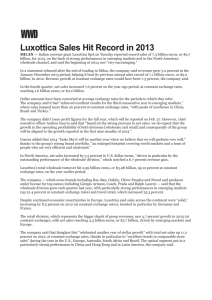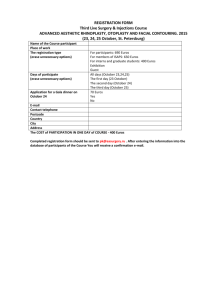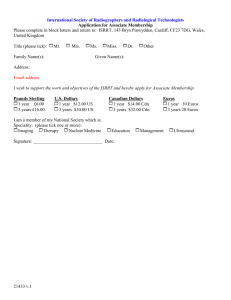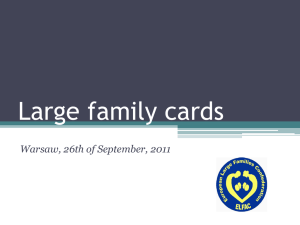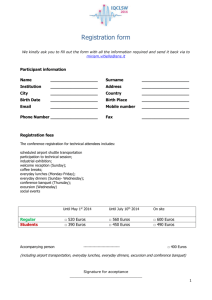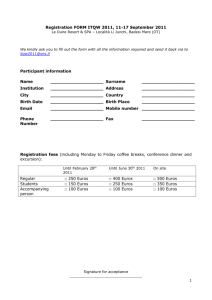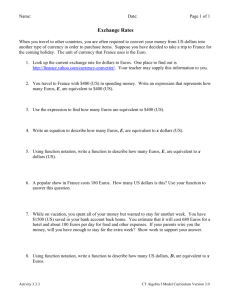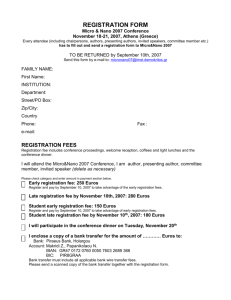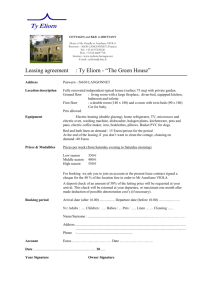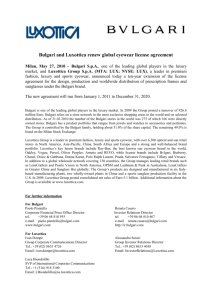Luxottica Net Dips, Safilo Rises
advertisement
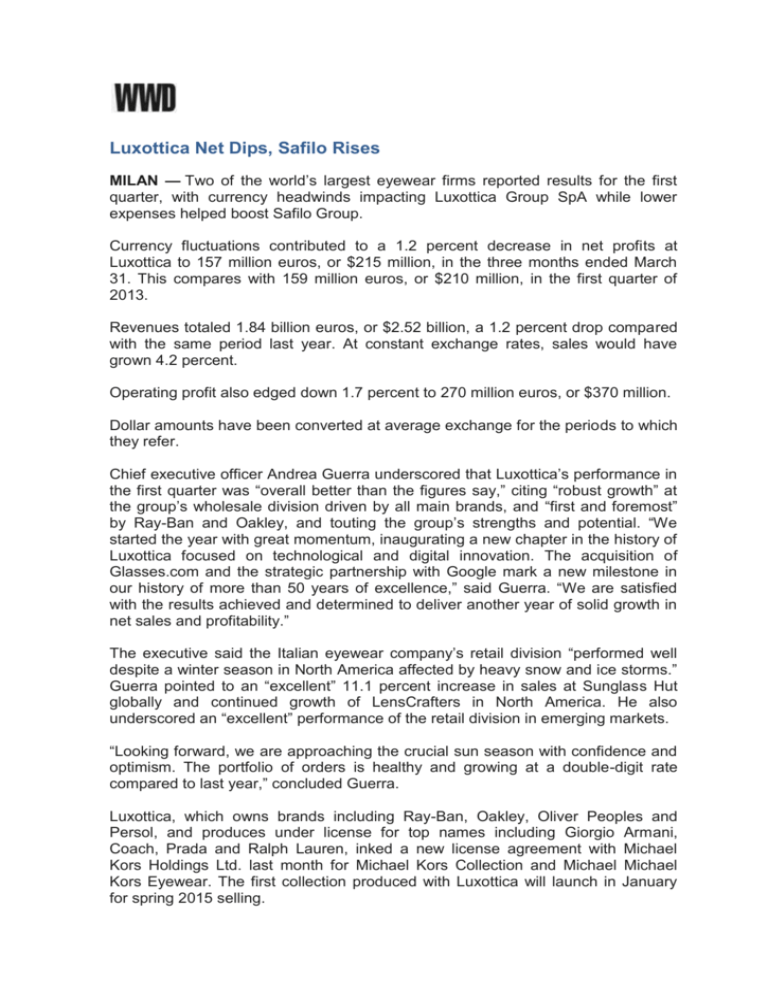
Luxottica Net Dips, Safilo Rises MILAN — Two of the world’s largest eyewear firms reported results for the first quarter, with currency headwinds impacting Luxottica Group SpA while lower expenses helped boost Safilo Group. Currency fluctuations contributed to a 1.2 percent decrease in net profits at Luxottica to 157 million euros, or $215 million, in the three months ended March 31. This compares with 159 million euros, or $210 million, in the first quarter of 2013. Revenues totaled 1.84 billion euros, or $2.52 billion, a 1.2 percent drop compared with the same period last year. At constant exchange rates, sales would have grown 4.2 percent. Operating profit also edged down 1.7 percent to 270 million euros, or $370 million. Dollar amounts have been converted at average exchange for the periods to which they refer. Chief executive officer Andrea Guerra underscored that Luxottica’s performance in the first quarter was “overall better than the figures say,” citing “robust growth” at the group’s wholesale division driven by all main brands, and “first and foremost” by Ray-Ban and Oakley, and touting the group’s strengths and potential. “We started the year with great momentum, inaugurating a new chapter in the history of Luxottica focused on technological and digital innovation. The acquisition of Glasses.com and the strategic partnership with Google mark a new milestone in our history of more than 50 years of excellence,” said Guerra. “We are satisfied with the results achieved and determined to deliver another year of solid growth in net sales and profitability.” The executive said the Italian eyewear company’s retail division “performed well despite a winter season in North America affected by heavy snow and ice storms.” Guerra pointed to an “excellent” 11.1 percent increase in sales at Sunglass Hut globally and continued growth of LensCrafters in North America. He also underscored an “excellent” performance of the retail division in emerging markets. “Looking forward, we are approaching the crucial sun season with confidence and optimism. The portfolio of orders is healthy and growing at a double-digit rate compared to last year,” concluded Guerra. Luxottica, which owns brands including Ray-Ban, Oakley, Oliver Peoples and Persol, and produces under license for top names including Giorgio Armani, Coach, Prada and Ralph Lauren, inked a new license agreement with Michael Kors Holdings Ltd. last month for Michael Kors Collection and Michael Michael Kors Eyewear. The first collection produced with Luxottica will launch in January for spring 2015 selling. The group’s wholesale division showed 3 percent growth in the first quarter to 805 million euros, or $1.1 billion. At constant exchange, sales would have climbed 7.9 percent. The group cited growth in Europe, in the U.K., Germany and the Nordic countries, in particular; emerging markets, singling out India and Brazil, and in North America. “The performance of the retail division was adversely affected by persistently volatile exchange rates together with harsh weather in North America,” said the company. In the period, sales totaled 1.04 billion, or $1.42 billion, down 4.2 percent at current exchange, but up 1.6 percent at constant exchange rates. At Safilo, which in March celebrated its 80th birthday, net income rose almost 23 percent in the first quarter on the back of a big reduction in net financial expenses and as sales grew in Europe. In the three months ending March, the company — which produces prescription and sunglass frames for licensed brands including Alexander McQueen, Banana Republic, Dior and Marc Jacobs, as well as for own brands including Safilo, Carrera and Polaroid — reported net income of 16.5 million euros, or $22.6 million, compared with 13.4 million euros, or $17.7 million in the year-ago period. Safilo said total revenues in the period were 293.2 million euros, or $401.7 million, up 1.9 percent at constant exchange rates, but down 1.3 percent at current exchange rates, due to a negative exchange rate impact. Dollar amounts have been converted at average exchange for the periods to which they refer. Safilo said that net financial expenses dropped 58 percent on the year-ago period, to 2.3 million euros, or $3.2 million, from 5.5 million euros, or $7.3 million, following a reduction in debt and “the better mix of financing sources following the high yield bond repayment in 2013.” Overall net debt in the first quarter dropped to 207.5 million euros, or $284.3 million, from 220.4 million euros, or $290.9 million in the first quarter of 2013. In the January-to-March period, Safilo said its operating margin increased to 12.1 percent of sales from 11.7 percent in the first three months of last year. Earnings before interest, taxes, depreciation and amortization increased 2.3 percent to 35.4 million euros, or $48.5 million. Furthermore, in terms of profitability, Safilo said that “in absolute terms,” gross profit improved by 2.4 percent following “improvements in product, brand and channel mix…combined with the increase in the ‘Made in Safilo’ volumes and with the progress in efficiency in the production processes.” Ceo Luisa Delgado pointed out that in the first quarter the company rolled out the Fendi collections globally and the Bobbi Brown eyewear collections in the U.S. and Canada. “Based on the initial positive market receptions, these two new businesses promise a satisfactory first year with sustainable quality growth potential,” Delgado said. Delgado also singled out “Polaroid’s continuous positive momentum in both core and new markets.” In terms of geographic markets, Safilo said that in Europe — its largest market — sales progressed 3.1 percent, to 131.3 million euros, or $179.9 million, with Germany and the U.K. being the “main driver of growth.” In Italy, Spain and Portugal, “business continued to recover.” In the U.S. market, on the other hand, revenues dropped 4.8 percent at current exchange rates, to 112.9 million euros, or $154.7 million, “partially affected by a soft performance in the retail business, and more generally in the prescription frame business at the independent optician stores.” Sales in North America — and at the company’s Solstice retail unit — were also impacted by bad weather earlier this year, Safilo said. At constant exchange rates, turnover would have increased 0.3 percent, the company said. In Asia sales were down 2.2 percent at current exchange rates, at 45.0 million euros, or $61.7 million, but up 1.9 percent at constant exchange rates. The company said that in the first quarter it had established a new unit dedicated to developing Latin American markets, which “delivered the best performances, highlighting the as-of-yet untapped potential for Safilo in this area of the world.”
